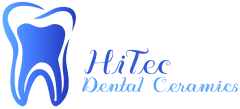PVS materials are renowned for their precision and dimensional stability, making them a popular choice for dental impressions. However, challenges exist with improper use.
Inaccurate Impressions: Poor technique can lead to distortions, bubbles, or incomplete captures of the dental anatomy.
Long Setting Times: PVS materials can take several minutes to set, leading to increased chair time.
Retakes: Inaccurate impressions often necessitate retakes, adding to patient discomfort and extending appointment durations.
By addressing these challenges, dental practices can improve efficiency, enhance patient experience, and reduce the frequency of remakes.
Strategies for Reducing Chair Time and Remakes with PVS Impressions
1. Preparation and Material Selection
Choose the Right PVS Material: Selecting a high-quality PVS material with appropriate viscosity can significantly impact the outcome. Consider using a medium or light body viscosity for better detail capture while ensuring it flows adequately into the prepared area.
Optimize Setting Time: Different PVS materials have varying setting times. Using fast-setting options can help reduce the time patients spend in the chair, but ensure they are still workable enough for accurate impressions.
2. Effective Technique and Application
Proper Tray Selection: Choosing the right impression tray is critical. Custom trays can provide a better fit and reduce the risk of distortion, while stock trays should be properly sized to ensure complete coverage of the arch.
Use of Adequate Adhesives: Applying a bonding agent to the impression tray can improve the adhesion of the PVS material, reducing the chance of the material separating from the tray during the impression-taking process.
Controlled Flow: When dispensing PVS material, ensure a controlled flow to minimize bubbles. Extruding the material from the back of the tray to the front can help achieve uniform coverage and prevent air entrapment.
3. Technique Improvement
Two-Step Impression Technique: Utilizing a two-step technique, where a light body PVS is applied first followed by a heavier body material, can enhance detail capture while minimizing remakes. The light body captures fine details, while the heavier material provides bulk and stability.
Selective Pressure Technique: This method allows for better adaptation and less distortion. Applying pressure selectively can help ensure that the material flows into all areas of the impression, improving accuracy.
Practice Proper Removal Techniques: Educate your team on how to remove impressions carefully and correctly. Quick but careful removal can help prevent tearing or distortion of the impression.
The example below is a photo of two different impressions taken by two different dentists. The one on the left is superior in the amount of PVS material and clarity of the impression details. Having a usable impression is critical to getting the restoration made correctly the first time.
4. Training and Education
Staff Training: Regular training sessions for the dental team on the nuances of PVS impression techniques can lead to improved outcomes. Ensuring that all team members understand the importance of technique can foster a culture of quality.
Patient Education: Informing patients about the impression process can lead to a more cooperative experience. Discussing what they can expect and how they can assist (e.g., remaining still) can help facilitate a smoother procedure.
5. Quality Control and Feedback
Immediate Evaluation: After taking an impression, evaluate it immediately before the patient leaves. Checking for bubbles, tears, or miscaptures can allow for quick retakes, reducing the need for additional appointments.
Documenting Common Errors: Keep a record of common issues encountered with impressions to identify patterns that may require further training or adjustment in technique.
6. Embrace Technology
Digital Alternatives: While PVS impressions are widely used, consider integrating digital impression systems as a long-term solution. Intraoral scanners can significantly reduce chair time and eliminate many of the challenges associated with traditional impressions.
Conclusion
Reducing chair time and the incidence of remakes in dentistry is crucial for enhancing patient satisfaction and practice efficiency. By implementing improved PVS impression techniques, dental practices can achieve more accurate results while minimizing the need for retakes. Selecting the right materials, optimizing techniques, investing in team training, and embracing technology are all essential strategies that can lead to better outcomes. As the dental industry continues to evolve, focusing on efficient impression-taking will ensure that practices remain competitive while delivering high-quality patient care.

